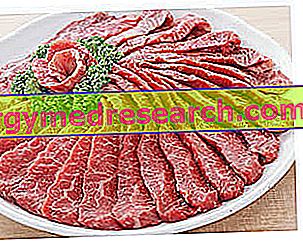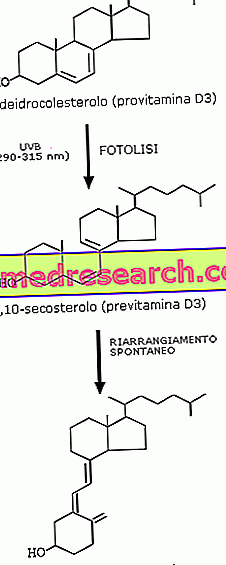As for meat and derivatives, the choice is not difficult. Among the fresh, lean and low cholesterol products, the famous chicken and turkey meats stand out. The low calorie cuts are essentially made up of the skinless chest / topside (while the rest of the animal has a higher lipid percentage); it is however possible to follow some small rules that could reduce the costs of supplying these foods.

Nowadays even the pig is sold at very competitive prices. The leanest and least expensive cuts are usually those of the loin and the fresh ham. Obviously, when it comes to pork, lovers of light cuisine turn up their noses. In reality, light pigs raised today have nothing to envy of beef; rather! To be honest, certain commercial cuts of light pork are leaner than others made from adult cattle (except, of course, for fatty parts). The pig has a greater subcutaneous adipose tissue than beef, while the latter (in proportion) often uses a greater intramuscular fatness; for this reason, adult bovine meat (which seems so thin to the eye), is often more energetic than that of pig properly DEGREASED. Go ahead then to whole pork loins bought fresh and still to be removed; at home level, it will not be complex to trim the piece eliminating all the fat and the excess muscular sheaths by means of a scannino knife; then, without too much dexterity, with a French knife, you can portion the loin in slices of 100g, or 150-200-etc, also to be frozen separately. I do not recommend buying a loin with bone (including a "tie" or small ribs); this would oblige you to separate the vein and, alas, to eat even the wonderful but fat ribs.
Who said that beef and veal are too expensive? First of all, there are not only fillets and sirloins, Florentine and ribs. Spending little of the adult bovine it is possible to buy broth muscle. These apparently fatty pieces are actually very gelatinous (collagen gelatin - a protein). Of course, they are not to be compared to the avian rump, but once boiled (they do not need added fats) they are very pleasant and go well with any slimming diet. Obviously it is not advisable to use particularly lipidic pieces, but of this the butcher will be able to advise you; I highly recommend trying the beef nut with carrots, celery and onion. A beef nut can be bought whole and cut into 3x3x3cm cubes to be frozen separately (possibly also the cooking water can be frozen and used instead of the stock cube for the formulation of stewed cereals or legumes).
When it comes to calves everyone takes a step back. It is a product that is quite expensive and apparently unrelated to the objectives of the article. On the other hand, I strongly suggest to add once a week the raw meat cut with a knife or consisting of minced chosen lean to be seasoned with extra virgin olive oil, stewed onion, mustard and black pepper. A 200g portion will cost very little and will be a pleasant alternative to the weekly menu. The same goes for the natural horse carpaccio. It should be remembered that raw meat saves considerably on the cost of gas for the stoves, offsetting (more or less) the expense for beef broth; obviously, the advice is referred to the hygiene rules and personal tastes.
Many of the readers will shudder at the thought of eating offal . Well, comparing the prices of these with those of the meat ... you can feel a very pleasant sense of "mouth watering". Be careful, though, the offal is not all the same. They have in common the remarkable presence of vitamins, mineral salts and proteins, but also for that of cholesterol and, some, of triglycerides. I strongly recommend to moderate its consumption in case of hypercholesterolemia and hyperuricemia, for all the others it is green light! I especially recommend: heart, liver, tripe and intestine. A real treat for gourmets. Those who avoid them often do not do it as a matter of taste, but because of a lack of food culture.
Regarding the techniques of cooking fresh meat, I have two essential suggestions. The first is to buy a good pan (sauté) with a thin base for all quick preparations (topside, loin medallions, etc.); no matter how much it will cost (always within the limits of reason), that little extra money will soon be back. A good pan will have a double, triple or quadruple duration compared to a less valuable one ... as long as you know how to work with it. It is true that the non-stick, in Teflon, in stone and in ceramic allow cooking regardless of the use of fats, but it is equally true that the presence of lipids helps to preserve the integrity of the coating. It will never be necessary to pour oil or butter on the surface before cooking but dirtying the pan makes it possible to NEVER burn the food. This is reflected in the next step, which is cleaning. These instruments should be left to soak with hot water (even without detergent, which will be used later) and rubbed (or rather, caressed!) With a sponge without abrasive parts. If you are not able to satisfactorily clean the instrument, there are 5 cases: you cooked the food over an extremely high flame, you cooked the food with the pan not aligned with the fire, you did a prolonged cooking with a prepared pan for quick cooking, you have an instrument that is worth little or you have already ruined the pan before reading this paragraph! All this also applies to cooking fish and eggs, which we will discuss later.
I would prefer not to dwell on the description of preserved meat; their consumption is absolutely moderate since, even if some are qualitatively better than others, the relative price totally precludes their purchase. They would be preserved meats useful for the diet: roast beef (which can possibly be home-made with loin → watch the videorecetta), bresaola, sweet lean ham and cooked ham.



